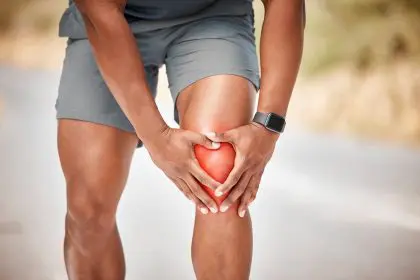The modern epidemic of neck pain has reached crisis proportions as millions of people spend increasing hours hunched over computers, smartphones, and tablets. This technological revolution has created a generation suffering from chronic neck discomfort that affects sleep quality, work productivity, and overall life satisfaction.
Traditional approaches to neck pain often involve expensive treatments, time-consuming therapy sessions, or prescription medications that address symptoms without tackling underlying postural problems. Meanwhile, the root causes continue wreaking havoc on cervical spine alignment and muscle tension patterns throughout each day.
The emergence of simple, effective neck stretching devices has revolutionized home-based pain management for people seeking immediate relief without ongoing costs or professional intervention. These tools work by addressing the fundamental postural imbalances that create neck pain while providing accessible solutions for busy lifestyles.
Understanding how basic neck stretching principles can transform daily comfort levels empowers individuals to take control of their pain management while preventing future problems. The key lies in consistent application of proper techniques that work with natural spinal mechanics rather than against them.
Recent innovations in neck stretching technology have made therapeutic-grade relief available at remarkably affordable prices, democratizing access to effective pain management tools that were previously available only through professional treatment settings.
Understanding the modern neck pain epidemic
Contemporary lifestyles create perfect conditions for developing chronic neck problems through repetitive postural stress that gradually overwhelms natural spinal mechanics. Hours spent looking down at devices or forward at computer screens place enormous strain on cervical vertebrae and supporting muscle structures.
The human head weighs approximately 10-12 pounds in neutral position, but forward head posture can increase effective weight to 30-40 pounds that neck muscles must constantly support. This dramatic increase in load creates fatigue, tension, and eventually pain that radiates throughout the upper body.
Tech neck represents a specific condition characterized by forward head posture, rounded shoulders, and loss of natural cervical curve that develops from prolonged device usage. This postural pattern becomes habitual, creating structural changes that persist even when not actively using technology.
Muscle imbalances develop as some neck muscles become chronically tight while others weaken from lack of proper activation. These imbalances create pain patterns that often extend beyond the neck into shoulders, upper back, and even arms as compensation patterns develop.
Sleep quality frequently suffers when neck pain becomes chronic, as comfortable positioning becomes difficult while muscle tension prevents deep, restorative rest. This creates cycles where poor sleep increases pain sensitivity while pain disrupts sleep quality.
1. Immediate cervical spine decompression through gentle traction
The RestCloud neck stretcher provides gentle traction that separates cervical vertebrae, relieving pressure on compressed discs and nerve roots while allowing natural spine spacing to restore. This decompression effect begins working within minutes of proper positioning.
Spinal decompression helps reduce inflammation around compressed structures while improving circulation to affected areas. Enhanced blood flow delivers healing nutrients while removing metabolic waste products that contribute to pain and stiffness.
The curved design of quality neck stretchers follows natural cervical spine contours, supporting proper alignment while providing therapeutic stretch. This biomechanically sound approach ensures that stretching forces distribute evenly rather than concentrating stress on vulnerable areas.
Gravity assists the decompression process when users position themselves correctly on firm surfaces, allowing body weight to enhance therapeutic effects without requiring active effort or complex positioning techniques.
Regular decompression sessions help prevent compression-related problems from developing while maintaining healthy disc spacing and nerve function throughout the cervical spine region.
2. Targeted muscle relaxation through strategic pressure points
Built-in massage nodes on advanced neck stretchers provide targeted pressure that helps release trigger points and muscle knots that commonly develop in chronically tense neck muscles. These pressure points work similarly to professional massage techniques.
The six massage nodes typically found on quality devices are strategically positioned to contact major muscle groups including the suboccipital muscles, upper trapezius, and levator scapulae that commonly harbor tension in people with postural problems.
Pressure point stimulation increases local blood circulation while triggering natural pain-relieving responses in the nervous system. This dual action provides both immediate comfort and longer-lasting therapeutic benefits.
The firm yet comfortable pressure helps break up fascial adhesions that develop in chronically tight muscles, restoring normal tissue mobility and reducing restrictions that contribute to ongoing pain patterns.
Users often report feeling immediate relaxation as pressure points release tension that may have been building for hours or days of stressful positioning and muscle guarding.
3. Restoration of natural cervical curve through consistent use
Regular use of properly designed neck stretchers helps restore the natural cervical lordosis that modern lifestyles tend to flatten or reverse. This curve restoration is crucial for optimal spinal mechanics and pain prevention.
The natural cervical curve distributes weight and forces efficiently throughout the spine while maintaining proper disc spacing and nerve root clearance. Loss of this curve concentrates stress on specific vertebrae while creating compression that leads to pain.
Consistent stretching in extension helps retrain postural muscles while gradually improving flexibility in structures that have adapted to forward head postures. This retraining process requires patience but produces lasting improvements in comfort and function.
Progressive curve restoration occurs as tight anterior neck structures lengthen while weakened posterior muscles strengthen through improved positioning. This balanced approach addresses both flexibility and strength components of postural problems.
Visual and proprioceptive feedback during stretching sessions helps users develop awareness of proper neck positioning that can be maintained throughout daily activities, extending benefits beyond treatment sessions.
4. Enhanced flexibility and range of motion improvement
Regular neck stretching significantly improves cervical spine mobility in all directions while reducing stiffness that limits comfortable movement throughout daily activities. Improved flexibility directly correlates with reduced pain levels and better function.
The multi-directional stretch provided by quality neck devices addresses restrictions in extension, lateral flexion, and rotation that commonly develop in people with postural problems. Comprehensive flexibility improvement requires addressing all movement planes.
Increased range of motion makes daily activities more comfortable while reducing compensation patterns that develop when normal neck movement becomes limited. Better mobility prevents secondary problems in shoulders and upper back.
Flexibility improvements often occur rapidly with consistent use, with many users noticing increased comfort within days of beginning regular stretching routines. This quick feedback encourages continued use while building confidence in the approach.
Progressive flexibility gains continue developing over weeks and months of regular use, with long-term users often achieving mobility levels they hadn’t enjoyed for years before developing neck problems.
5. Improved posture through postural muscle retraining
The RestCloud device helps retrain postural muscles by providing feedback about proper cervical spine positioning while strengthening muscles that support healthy alignment. This retraining effect extends beyond stretching sessions into daily posture habits.
Deep neck flexor muscles that become weak in forward head posture benefit from the positioning required during proper neck stretcher use. Strengthening these muscles provides better support for maintaining proper head position throughout daily activities.
Suboccipital muscle lengthening occurs as the device stretches tissues that become chronically shortened in forward head postures. This lengthening is essential for restoring balance between anterior and posterior neck muscle groups.
Proprioceptive awareness improves as users learn to recognize proper neck positioning during stretching sessions. This increased body awareness helps maintain better posture throughout daily activities as users become more conscious of positioning habits.
Postural improvements often become apparent to others as users develop more upright, confident appearances that reflect better spinal alignment and reduced pain levels.
6. Stress reduction through relaxation response activation
The gentle stretching and pressure point stimulation provided by neck stretchers triggers natural relaxation responses that help reduce overall stress levels while promoting mental calmness and improved mood.
Physical tension release in neck muscles often corresponds with emotional stress reduction as the body-mind connection allows physical relaxation to promote mental calmness. This dual benefit makes neck stretching valuable for overall wellness.
Regular relaxation sessions help break stress-tension-pain cycles that perpetuate neck problems while teaching the body to maintain lower baseline tension levels throughout daily activities.
Many users report improved sleep quality following evening stretching sessions as the relaxation response carries over into bedtime routines, helping achieve deeper, more restorative rest.
7. Cost-effective long-term pain management solution
At approximately $15, quality neck stretchers provide exceptional value compared to ongoing professional treatments while offering unlimited usage without per-session costs or scheduling constraints.
The durability of well-made devices ensures years of reliable use, making the cost-per-use extremely low compared to alternative pain management approaches. This economic advantage makes consistent treatment accessible to virtually everyone.
Convenience factors include the ability to use the device at home, work, or while traveling without requiring appointments or professional supervision. This accessibility promotes consistent use that is essential for achieving lasting benefits.
Time efficiency allows users to achieve therapeutic benefits in just 10-15 minutes daily, making neck stretching compatible with busy schedules while providing cumulative benefits that improve over time.
Prevention benefits help avoid costly future treatments by addressing postural problems before they develop into more serious conditions requiring expensive interventions or extended treatment periods.
Proper usage techniques for maximum effectiveness
Correct positioning on firm surfaces ensures that the neck stretcher can provide appropriate support while allowing gravity to assist the decompression process. Soft surfaces like beds or couches reduce effectiveness by allowing the device to sink.
Starting with the convex side provides gentler introduction for users new to neck stretching while allowing gradual adaptation to therapeutic positioning. This progressive approach prevents discomfort that might discourage continued use.
Duration guidelines recommend 10-15 minute sessions initially, with gradual increases as tolerance improves. Longer sessions aren’t necessarily better and may cause soreness in users who advance too quickly.
Breathing techniques during stretching enhance relaxation while promoting circulation to treated areas. Deep, slow breathing maximizes therapeutic benefits while making sessions more comfortable and effective.
Consistency proves more important than session length, with daily use providing better results than longer but infrequent sessions. Building sustainable routines ensures long-term success with neck pain management.
Safety considerations and when to seek professional help
Most people can safely use neck stretchers when following proper guidelines, but certain conditions require professional evaluation before beginning any stretching program. Understanding these limitations helps ensure safe usage.
Acute injuries, severe pain, or neurological symptoms including numbness or tingling warrant professional evaluation before using stretching devices. These conditions may require specific treatment approaches beyond simple stretching.
Gradual introduction helps identify any adverse reactions while allowing the body to adapt to therapeutic positioning. Users should discontinue use if pain increases or new symptoms develop during stretching sessions.
Professional consultation can help optimize usage techniques while addressing specific postural problems that may require additional interventions beyond stretching alone.
Regular monitoring of symptoms helps track progress while identifying any changes that might indicate need for professional evaluation or treatment modifications.
The RestCloud neck stretcher represents a remarkable innovation in accessible pain management, providing professional-quality therapeutic benefits at an amazingly affordable price point. For millions of people suffering from modern neck pain, this simple device offers hope for immediate relief and long-term improvement.
Success with neck stretching requires understanding proper techniques, maintaining consistency, and having realistic expectations about the gradual nature of postural improvements. However, the investment in time and effort pays dividends through reduced pain, better sleep, improved posture, and enhanced quality of life that extends far beyond the brief daily treatment sessions.Deep breathing naturally occurs during comfortable stretching sessions, activating parasympathetic nervous system responses that promote healing and recovery. This breathing pattern enhancement contributes significantly to therapeutic benefits.
















